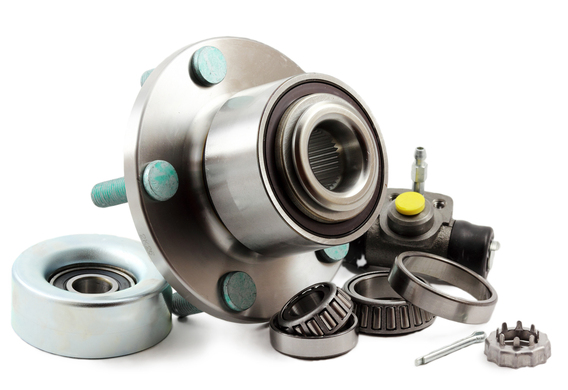
Traditionally, there are two types of hub bearings radial-nosed and roller conical. Since the middle of the last century, one-armed bearings have been superseded by the Hub Unit Bearings. Tie-bearing characteristics
Tie-bearing characteristics
In the car, hub bearings are subject to extreme loads: high temperature swings, various environmental impacts (not least salt), and by impact of wheel shock in the pit due to actuators, brakes and steering. The wheel shall be rotated without any play, with acceptable noise and minimum friction.
Generations of the Apotheces
The bearings were still used in the suspension of the carriage. As motor vehicles develop and the average speed of their movement increased, the sub-bearings have been subjected to engineering rethinking on several occasions in order to make the site more robust and repaitable. To date, four generations of step bearings are different, each of which can be found in a more or less modern car.
Some modern hub bearings are equipped with a multipolar magnetic ring of ABS, so it is necessary to avoid magnetic field effects in storage. SX supplies such bearings with a metal protective cover from a special alloy to protect against degasification.
The bearing shall be mounted in such a way that the pole-ring is facing the sensor of the transducer.
Stubbed bearings
Uniform bearings are of two kinds: peal and roller conical ones. The characteristics of bearing types are large distances between effective centres of the load application.
The main drawback of such bearings is the need to create a preliminary thrust when working with the hub; the complexity of the installation process; the need for lubricating bearings.
HUB bearings
Since the middle of the last century, one-armed bearings have been replaced by the more progressive subbearings of type HUB (Hub Unit Bearings). Today, such bearings are most often used in the hub of trucks and off-road vehicles.
A tiled HUB-I node is a whole knot consisting of a two-lane radiobic and two-rung roller conical bearings. The main components are the outer ring, the two inner rings, and the set of balls or roller skates. The angle of bearing of the bearing is optimized on the basis of the existing loads of specific brands and models of cars.
A bearing node of type HUB-I has seals and filled with a plastic lubricant for the entire lifetime of the hub site. In fact, the Hub HUB-I nodes were developed in the late 1960s, as a result of the growing interest of the automotive industry in the assembled hub sites, which ensured ease of installation in a conveyor assembly.
The HUB-I nodes for vehicles with ABS systems can be equipped with a special ABS sensor. The main advantages, compared to the one-handed bearings, are: the installed presage to ease the installation process of the absence of adjustment piers-the absence of need for extra bearings of the bearings of the hub site
The HUBII bricks were developed on the basis of experience with HUB's bearings. The difference in principle is the presence of a special flange on the outer ring of the bearing. Depending on the model, the flange has stiletto or holes under the bolt connections and may be attached to the wheel hub or brake disc. The rest of the details are similar to those used in the HUB-I hub.
The HUBII bricks are normally used with a rotating outer ring on the leading or rear axles of the vehicle. For the leading axles, an alternative bearings design is available. In this case, the outer ring shall be attached to the suspension elements of the vehicle and the inner ring shall be rotated. The ABS sensor can be integrated into the hub construction.
In comparison with the hub nodes of the previous generation, the bearings of the HUBII II have a number of advantages, namely: ease of installation reduced weight and size of the hub
The HUB-II bearings were further developed by the HUBIII hub. Both rings of such bearings, both external and internal, have flanges. To avoid corrosion at interfaces, the knot has a special galvanic coating. The dynamically allocated load load is maximized by the use of a separate inner ring for one of the rolling bodies. The internal ring shall be placed on the quasi-axis at the front of the front of the ring connector. In addition, the inner ring is fixed in the axial direction. The outer ring is fixed to the hub. The rotating inner ring is designed to attach to the brake discs. The resizing of the hub is specified under a specific brand and model of a car. Like the previous generation of hub nodes, HUB-III is filled with plastic grease for the entire life of the bearings. In addition, this node allows for the installation of different types of mangy seals, the choice of which is determined by the general operating conditions of the hub.
According to the buyer's requirements, this node has the possibility to install the ABS sensor, or only one multipolar magnetic ring on the rotating element of the hub. The main distinguishing feature of this type of hub is the low radial value, which significantly reduces the vibration of the wheel during braking. In addition, the front-connection makes it easy to install and dismantle the bearing, while ensuring high accuracy of the boarding.









